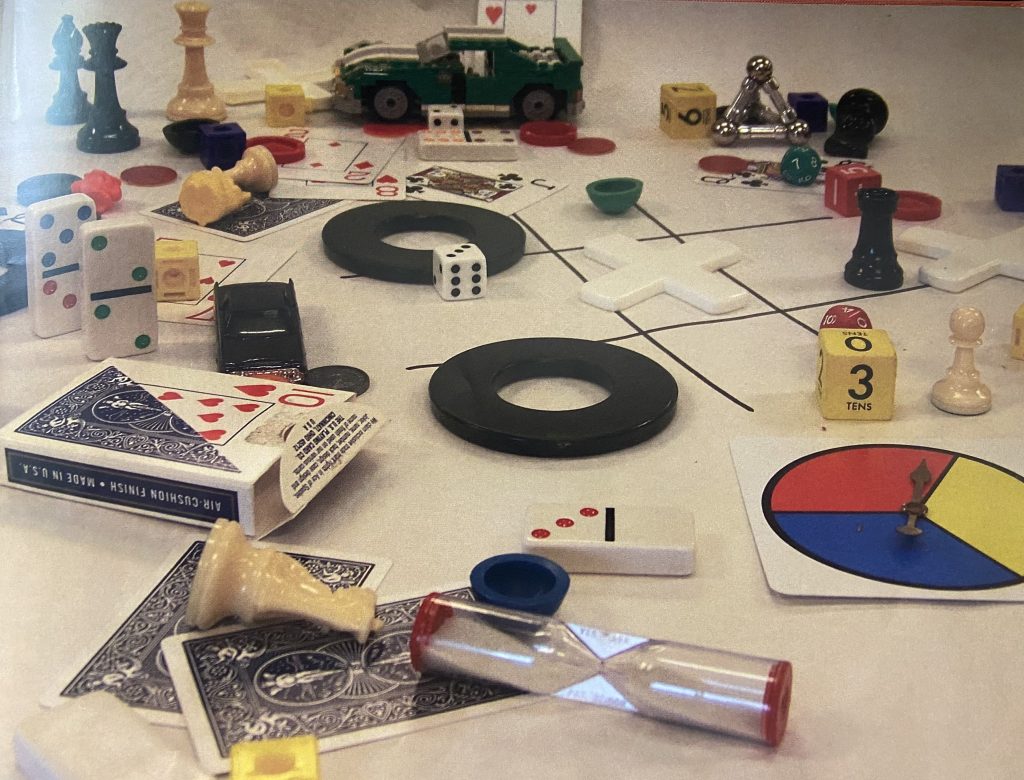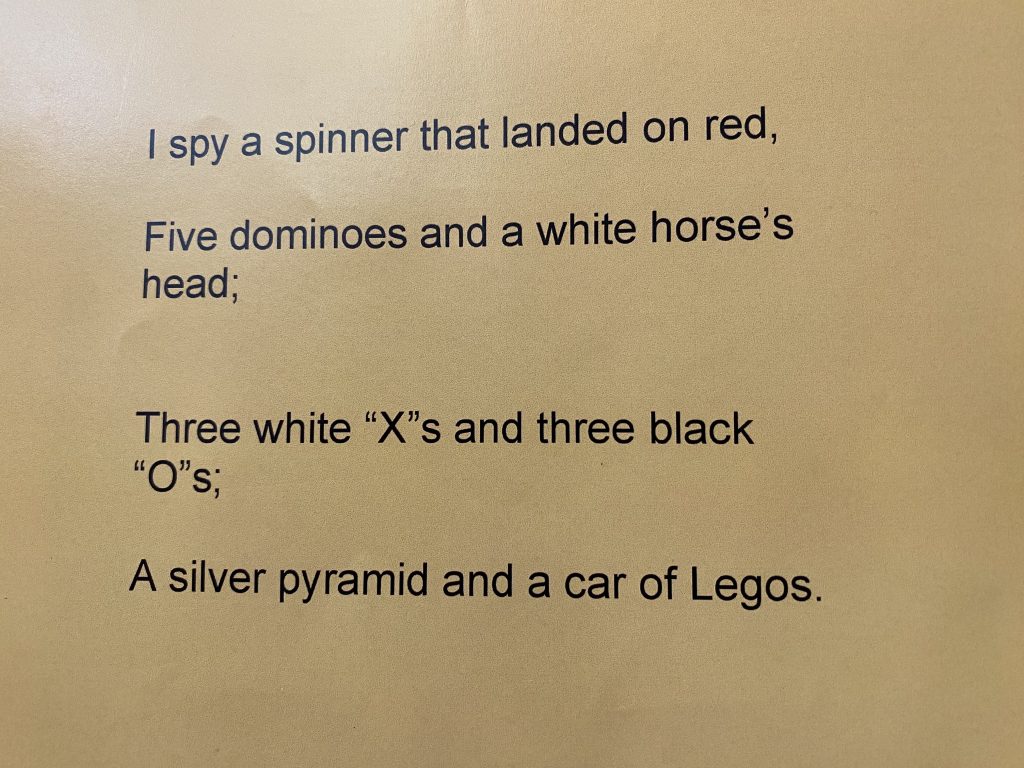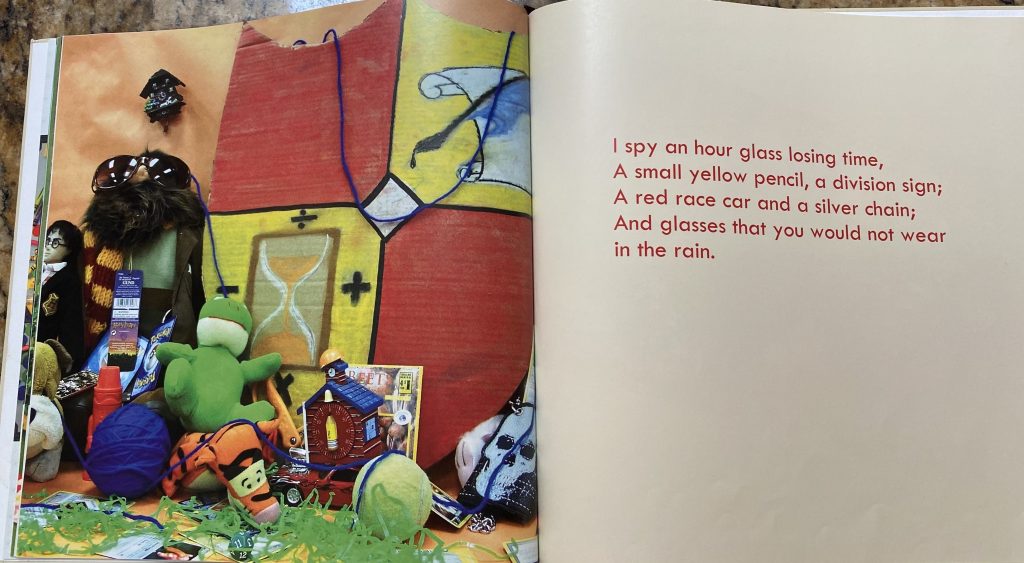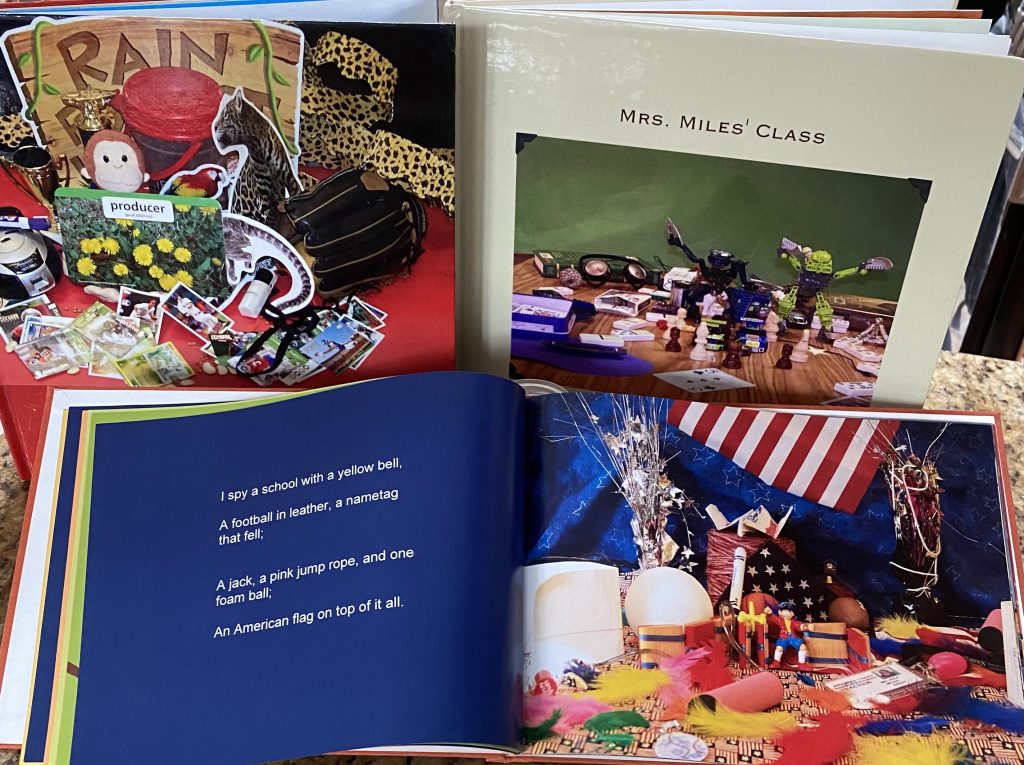When I taught 4th grade, I wanted to incorporate activities that made it fun to learn the elements and tools of poetry such as lines, stanzas, theme, meter, rhyme, rhythm, repetition, and mood. And also to build on their knowledge of figurative language: simile, metaphor, onomatopoeia, alliteration, personification, hyperbole, and idioms.
The most popular way I found to do this was an activity utilizing the I Spy series of books, which my students already enjoyed. Jean Marzollo, author of the series, has a teaching guide on her website. However, if you’d like to see the step-by-step process I used, I’ll run through it here:
If you’re a teacher interested in using this activity with your students, here is how we created our projects:
- Let students pick groups to work with (or assign groups of 3-4).
- Read multiple riddles (poems) from the I Spy series of books. Study the structure, the rhyming patterns, number of syllables and rhythm of each one. They’re consistent, so it’s easy to learn. Use the song Sweet Betsy from Pike to learn the rhythm.
- Have a brainstorming session where the group decides what kind of objects they’d like to bring from home (or use from the classroom) in order to create the pictures. Also have them start thinking of objects they plan to partially hide for the seeking part of the riddles.
- Utilize the cafeteria or school media center when available to spread out for the photo shoots on the appointed date/time. Use white paper of other colors of bulletin board paper to help create a solid backdrop for the images. Although, I gave my students a lot of leeway as far as how they wanted to shoot their photos.
- Print color photos and bring to class. Split into groups and allow them to begin writing the riddles. An organizer can help with this. So can reminding them to sing or hum the tune of Sweet Betsy from Pike once you’ve taught them the beat.
- Use a rubric to score. The first few years we did this activity I laminated the images with the written text underneath and bound them into books. Later, I used a site like Snapfish or Shutterfly to print them. Either works. I definitely recommend sharing with other classes and grade levels as the students love seeing how easy (or difficult) it turns out for other kids to solve the riddles. I created a PowerPoint of the book each year for sharing with other classes. Groups almost never got the exact meter, but that’s okay. The rubric lets them see where some points are deducted, but the grades for this were generally in the A/B range for groups that put in effort.


Sometimes the groups needed guidance making sure the objects they intended people to “spy” were at least partially visible. Also, encourage them to keep things away from the extreme edges which could get lost in the binding. Sometimes the kids had a hard time rhyming certain words.
In the image below, a group really wanted to have the sunglasses be one of the items found, but couldn’t think of a rhyming word for them. So, they followed the riddles of the I Spy books and added in the riddle aspect.

They were able to rhyme rain with chain, so they earned full points on the scoring rubric for following the aabb rhyme scheme.

Check out this great resource with more examples from classes that have made their own I Spy books.
Here is lesson plan I found online with ELA standards using I Spy.
STANDARDS COVERED:
CCSS.ELA-LITERACY.RL.4.5:
“Explain major differences between poems, drama, and prose, and refer to the structural elements of poems (e.g., verse, rhythm, meter).” Worksheets for this standard.
CCSS.ELA-LITERACY.RF.4.3.A:
“Use combined knowledge of all letter-sound correspondences, syllabication patterns, and morphology (e.g., roots and affixes) to read accurately unfamiliar multisyllabic words in context and out of context.” Worksheets for this standard.
